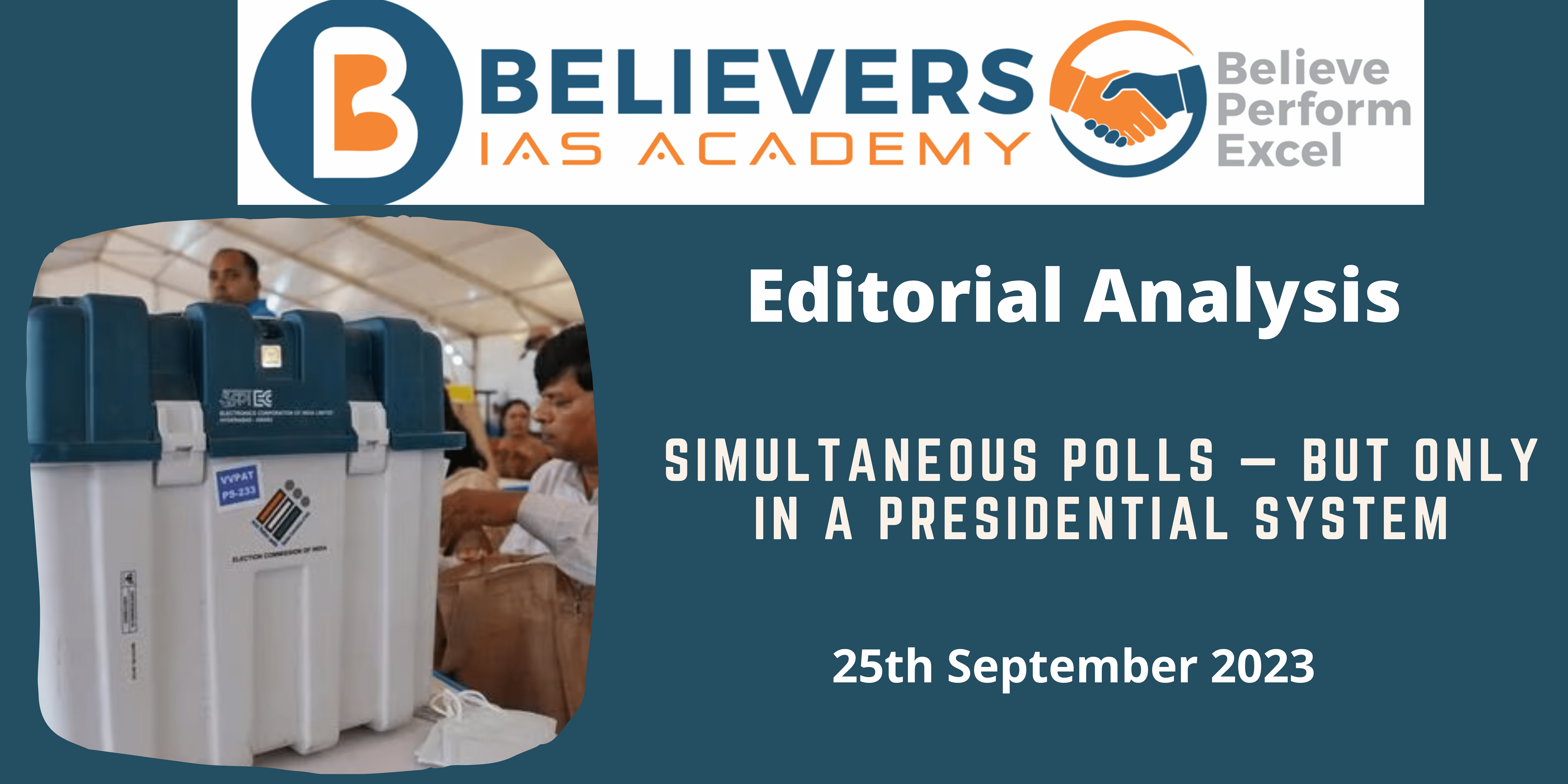Simultaneous polls — but only in a presidential system
Context:
The Narendra Modi government is revisiting the concept of “one nation-one poll,” aiming to synchronize all State elections with the general Lok Sabha election. To initiate this process, the terms of several State Assemblies, which may not coincide with the Lok Sabha election, need adjustment.
Relevance:
GS-02 (Indian Polity)
Prelims:
- Election Commission of India
- Supreme Court
- Salient features of Constitution
Mains Question:
Analyze the feasibility of implementing “one nation-one poll” in the Indian parliamentary system and explore potential challenges. (150 words)
Dimensions of the Article:
- Challenges in the Current Parliamentary System
- The Need for a Presidential System
- Constitutional Amendments Required
- The Compatibility of Presidential System with Federalism
- The Government’s Initiative and Political Implications
Challenges in the Current Parliamentary System:
- The fundamental issue with implementing “one nation-one poll” lies in the existing parliamentary system.
- In this system, the government’s survival hinges on maintaining the confidence of the majority in the legislature.
- Mid-term elections can occur due to party splits, defections, or dissent within the ruling party, posing a significant hurdle to simultaneous elections.
The Need for a Presidential System:
- The solution to this challenge may require transitioning to a presidential form of government, as seen in the United States.
- In such a system, the President or Governor is directly elected and does not rely on parliamentary majority support.
- This distinction allows for synchronized elections without compromising the core principles of democracy.
Constitutional Amendments Required:
- Switching to a presidential system entails substantial constitutional changes. Amendments would be needed in various sections of the Constitution, including those governing the President, Governors, Council of Ministers, and the line of succession. This shift is substantial but necessary for “one nation-one poll.”
The Compatibility of Presidential System with Federalism:
- Concerns about federalism need not impede the adoption of a presidential system. The United States, a federal country, successfully combines federalism with a presidential form of government.
- The distribution of powers among States can coexist with the concentration of executive authority at the national level.
The Government’s Initiative and Political Implications:
- The present government’s move towards “one nation-one poll” faces challenges. It lacks the required two-thirds majority in either House of Parliament to push through these constitutional amendments unilaterally.
- The Opposition has expressed its disagreement. The timing of this initiative may be influenced by the desire to postpone State elections due at year-end. However, any attempt to use this initiative to justify postponing State elections could raise constitutional and legal issues and potentially be challenged in the courts.
Conclusion:
- Implementing “one nation-one poll” in India’s parliamentary system presents intricate challenges. The potential solution lies in transitioning to a presidential form of government, but this necessitates substantial constitutional amendments.
- While federalism is a consideration, it is not inherently incompatible with a presidential system, as demonstrated by other nations. The government’s current initiative may face political roadblocks, and any attempts to postpone State elections under this pretext could invite legal scrutiny. The feasibility of this endeavor remains a complex issue that requires careful consideration.




